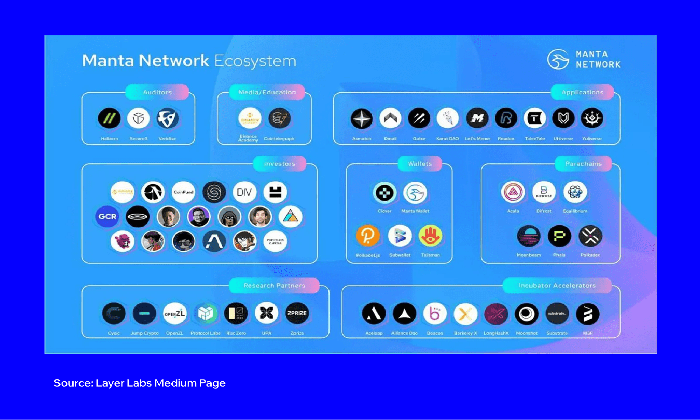The recent Manta Network Zoom hack has raised alarm bells within the cryptocurrency community, highlighting the evolving tactics of cybercriminals, specifically the notorious Lazarus Group. In a sophisticated phishing attack, the attackers utilized familiar faces to lure their target into downloading malware, presenting a seemingly legitimate front during a routine video call. Manta Network co-founder Kenny Li, who was the intended victim, shared his harrowing experience of recognizing the red flags during the encounter, which ultimately led him to evade a potential breach. The incident underscores the pressing need for crypto security awareness as more sophisticated scams emerge, including Zoom scams that prey on personal connections. With the threat of malware downloads and phishing attacks on the rise, it is crucial for individuals engaged in the crypto space to remain vigilant and skeptical of unexpected requests from acquaintances.
In an alarming turn of events, a recent incident involving a Zoom compromise illustrates the lengths to which cyber attackers will go to infiltrate sensitive environments. A high-profile member of the Manta organization experienced an attack that could be attributed to state-sponsored hackers, with techniques reminiscent of traditional phishing schemes but with modern twists. Dubbed a potential Zoom deception, the attack employed pre-recorded footage of known individuals to manipulate the target into compromising their digital security. The attack serves as a stark reminder for those navigating the cryptocurrency landscape to stay alert against online scams and phishing attempts that exploit familiarity and trust. As such, the rising threat of hacker groups emphasizes the need for robust security measures in the digital finance realm.
Understanding the Manta Network Zoom Hack
The recent attempted hack on Manta Network, disclosed by co-founder Kenny Li, showcases a dangerous mix of advanced phishing techniques and social engineering. This particular incident involved the Lazarus Group, a notorious hacking collective linked to North Korea, which used highly convincing video impersonation tactics to deceive Li into downloading malware. The hack utilized pre-recorded footage of trusted individuals, amplifying its effectiveness by making the attack appear legitimate. Such practices indicate a disturbing trend in cyber threats targeting the crypto community.
In the context of cybersecurity, this Zoom hack serves as a critical reminder of the vulnerabilities to which even seasoned industry professionals are exposed. Phishing attacks, especially those curated with sophisticated multimedia elements, can lead to catastrophic breaches if individuals let their guard down. Recognizing the red flags—like unusual prompts for software downloads—is essential for maintaining crypto security amid increasing malware threats.
The Tactics of the Lazarus Group
The Lazarus Group has gained notoriety for orchestrating some of the most significant cyberattacks in recent history, often leveraging phishing attacks as their primary modus operandi. Their recent attempt on Manta Network exemplifies their evolving tactics, which now include real-time impersonation and exploiting the trust relationships of their targets. By utilizing genuine images and videos of familiar faces, they can manipulate emotions and instill a false sense of security, making even the most vigilant individuals susceptible to their scams.
This sophisticated approach to cybercrime not only highlights the technical prowess of the Lazarus Group but also underscores the need for enhanced awareness regarding crypto security. Organizations and professionals within the crypto space must place a greater emphasis on training protocols to recognize signs of compromise, especially in environments where communication often happens online through apps like Zoom. Diligence in verifying identities and maintaining cybersecurity practices can help mitigate risks associated with these advanced persistent threats.
The Impact of Phishing Attacks on Crypto Communities
Phishing attacks continue to rise, particularly within the cryptocurrency sector, leading to increased vigilance among participants. Kenny Li’s experience with the Manta Network Zoom hack serves as a cautionary tale and illustrates the emotional toll these sophisticated scams can impose. Crypto enthusiasts and professionals are often targeted due to their financial assets, making them prime subjects for manipulation through psychological tactics that the Lazarus Group has become known for.
The aftermath of such attacks can create widespread distrust and hesitance in the community, as individuals become more cautious about engaging in online communications and investments. This heightened sense of wariness, while necessary, can also stifle innovation and collaboration within the rapidly evolving crypto landscape. Therefore, promoting awareness and education about phishing tactics is paramount to safeguard community members against falling victim to these devious schemes.
Recognizing Red Flags in Zoom Communications
A critical aspect of preventing phishing attacks, such as the one encountered by Li, is knowing how to identify red flags in online communications, especially during video calls on platforms like Zoom. Users should be aware of unusual prompts requesting software downloads, particularly when these requests come suddenly from individuals who appear known or trustworthy. The deceptive nature of the Manta Network Zoom hack further highlights how cybercriminals exploit the familiarity and trust established in professional networks.
Another red flag to consider is the absence of essential audio cues during conversations. As experienced by Li, sudden silence in a video call—where everything else appears normal—should prompt immediate skepticism. Combining visual and auditory cues is vital in determining the authenticity of the communication. Maintaining a heightened state of awareness for such signals can significantly reduce vulnerability to these insidious phishing attempts.
Strategies to Enhance Crypto Security
To combat the rising tide of phishing attacks and enhance crypto security, individuals must adopt proactive strategies that include rigorous identity verification processes. Engaging in direct communication through alternative channels, as Li attempted with Telegram, can help confirm the identities of contacts before proceeding with any actions that involve sensitive information or downloads. Collaborating with trusted peers and establishing secure communication protocols can minimize the risk of falling victim to impersonation attacks.
Additionally, utilizing comprehensive security software to monitor and analyze for potential threats can prove invaluable. These tools can alert users to suspicious activities associated with their accounts and any unsolicited software prompts. By incorporating such measures into the daily operations of crypto-related activities, individuals can fortify their defenses against malware downloads and other malicious attempts by groups like Lazarus.
The Role of Community in Fostering Awareness
Communities within the cryptocurrency world must work collaboratively to foster awareness about phishing scams, including sophisticated attacks like the Manta Network Zoom hack. Peer-to-peer sharing of experiences and strategies can empower members to remain vigilant against such threats. Platforms where community members discuss their encounters with hacks and scams can serve as informative resources, helping others recognize similar tactics used by cybercriminals.
Supporting education initiatives within the crypto space can also amplify the collective defense against phishing attacks. Hosting webinars and training sessions focused on identifying signs of phishing scams, and the psychological tactics often employed, can fortify community resilience. By building a knowledgeable network of crypto participants, the chances of minimizing impacts from such attacks become substantially higher.
Establishing Secure Communication Protocols
To better protect against phishing attacks, it is essential for cryptocurrency professionals to establish and adhere to secure communication protocols. This involves verifying identities through multiple layers of confirmation, especially when engaging in conversations regarding sensitive transactions or information uploads. Substituting common platforms like Zoom for trusted alternatives may also add an extra layer of security, reducing the chances of falling victim to impersonation tactics employed by hackers.
Furthermore, being conscious of how information is shared in digital communications can deter potential attacks. Encouraging practices such as encrypted messages and scheduled live confirmations can prevent malicious actors like those in the Lazarus Group from easily infiltrating personal or professional discussions. Through these practices, the community can create a fortification against common threats while nurturing a culture of security awareness.
The Future of Cybersecurity in the Crypto Space
As witnessed through the Manta Network Zoom hack, the landscape of cybersecurity within the crypto industry is constantly evolving. Hackers are becoming increasingly sophisticated, necessitating an agile approach to security that incorporates the latest technologies and methods for threat detection. Future threats may hinge heavily on the manipulation of trust and identity, making the establishment of robust security frameworks essential in the ongoing battle against cybercrime.
Investment in cyber defense training, combined with innovative technology solutions designed to thwart potential phishing attacks, will be vital for protecting the integrity of the cryptocurrency system. Stakeholders must unite to foster a secure environment that enables growth and innovation while mitigating the risks that accompany the digital era. The lessons learned from incidents like the Manta hack should guide the industry’s preventative strategies moving forward.
Taking Responsibility for Personal Cyber Hygiene
Ultimately, personal responsibility plays a critical role in preventing phishing attacks within the crypto community. Through maintaining regular updates on personal security practices and staying informed about the latest phishing techniques, individuals can effectively enhance their resilience against scams. Users should prioritize creating strong passwords and leveraging multi-factor authentication wherever possible, as these simple steps can create barriers against unauthorized access.
Moreover, it is essential for individuals to engage in continuous learning around potential cybersecurity threats. In addition to peer-supported education within the cryptocurrency community, resources such as security blogs, webinars, and expert discussions can equip users with the skills needed to navigate the complexities of cyber hygiene. The proactive measures taken by individuals can cumulatively contribute to a more secure crypto environment, combating the rising threat landscape effectively.
Frequently Asked Questions
What happened in the Manta Network Zoom hack involving the Lazarus Group?
The Manta Network Zoom hack involved a sophisticated phishing attack reportedly linked to the Lazarus Group, where co-founder Kenny Li encountered a fake Zoom meeting that used live recordings of familiar faces to convince him to download malware. Li noticed red flags such as the lack of sound and an unexpected script download prompt, which prompted him to leave the meeting.
How can individuals protect themselves from phishing attacks like the Manta Network Zoom hack?
To protect against phishing attacks similar to the Manta Network Zoom hack, individuals should be cautious of unexpected download requests and verify identities through different communication channels. Look for signs such as missing audio or unusual prompts during video calls, and always opt for official software updates from trusted sources.
Why is the Manta Network Zoom hack significant for crypto security?
The Manta Network Zoom hack is significant for crypto security as it highlights the increasing sophistication of phishing attacks targeting individuals in the cryptocurrency sector. The incident underscores the importance of vigilance, as the attackers used familiar faces and legitimate video feeds to create a convincing scam to steal sensitive information.
What signs indicate a possible Zoom scam like the one in the Manta Network incident?
Signs of a possible Zoom scam, such as the one experienced in the Manta Network incident, include unusual prompts to download files, lack of audio during meetings, and meetings featuring familiar faces but exhibiting suspicious behavior. Always question the need for unexpected downloads and verify identities before engaging.
How did the Lazarus Group use emotional manipulation in the Manta Network Zoom hack?
In the Manta Network Zoom hack, the Lazarus Group applied emotional manipulation by using familiar faces in the video call to exploit trust and familiarity. This strategy aims to lower defenses and increase the likelihood of the target complying with malicious requests, like downloading malware.
What should the crypto community learn from the Manta Network Zoom hack?
The crypto community should learn to stay vigilant against increasingly sophisticated phishing attempts like the Manta Network Zoom hack, which use social engineering tactics. Users should be aware of the potential for scams and prioritize verifying identities before engaging in any online communication that involves downloads.
What techniques did Kenny Li use to recognize the Manta Network Zoom hack?
Kenny Li recognized the Manta Network Zoom hack by identifying suspicious elements, such as a lack of sound, an unexpected prompt to download a script, and noticing that although the meeting used faces of known individuals, the context felt off. His instinct and prior knowledge of phishing tactics helped him avoid a potential malware download.
| Key Point | Details |
|---|---|
| Manta Network Co-founder | Kenny Li reported an attempted Zoom hack. |
| Attack Description | The attack was a sophisticated phishing attempt using live recordings of familiar faces to convince Li to download malware. |
| Key Indicators of the Attack | Li noticed the lack of sound and a suspicious software prompt as red flags. |
| Impersonation Attempts | Li attempted to verify the impersonator’s identity via Telegram but was blocked. |
| Suspected Perpetrators | Li suspects the North Korean Lazarus Group is behind the hack. |
| Emotional Exploitation | Li highlighted that such hacks exploit emotional connections and mental fatigue. |
| Community Alerts | Li warned the crypto community to be cautious of unexpected download requests. |
| Rising Trend | Other crypto community members have experienced similar phishing attempts. |
Summary
The Manta Network Zoom hack highlights critical cybersecurity issues within the cryptocurrency community. Kenny Li’s experience showcases the sophistication of modern phishing attacks, specifically how hackers can manipulate familiarity to deceive individuals. As Li emphasizes, it’s vital for users to remain vigilant and skeptical of unsolicited download requests. This incident serves as a cautionary tale for all involved in the cryptocurrency sector, underlining the importance of maintaining security protocols and being aware of potential threats.
The recent Manta Network Zoom hack reveals a new level of sophistication in cyber threats, as co-founder Kenny Li narrowly escaped a phishing attack potentially orchestrated by the notorious Lazarus Group from North Korea. During a seemingly normal Zoom meeting, Li was targeted by impersonators using recordings of familiar faces to manipulate him into downloading malware. With the deceptive nature of the meeting, complete with familiar visuals but eerily absent audio, it became a classic case of a Zoom scam designed to exploit trust. Li’s experience highlights the escalating threats to crypto security, emphasizing that even legitimate platforms can be weaponized for dangerous phishing attempts. The need for awareness is greater than ever, as the techniques used in this attack serve as a cautionary tale for the cryptocurrency community about the risks posed by such advanced social engineering tactics.
In the ever-evolving landscape of digital security, incidents like the Manta Network Zoom hack shed light on the alarming tactics used by malicious actors. This particular incident illustrates a common yet sophisticated type of cyberattack that leverages familiar visuals to create a realistic façade, making it difficult for victims to discern authenticity. By employing advanced methods, such as the creation of genuine-looking video calls, attackers aim to manipulate emotions and trust, compelling individuals to unwittingly engage in downloading harmful software. As these online scams and phishing attempts become more common, it becomes imperative for users, especially within the cryptocurrency sector, to remain vigilant and educated on the potential threats lurking behind even the most innocuous communications.














